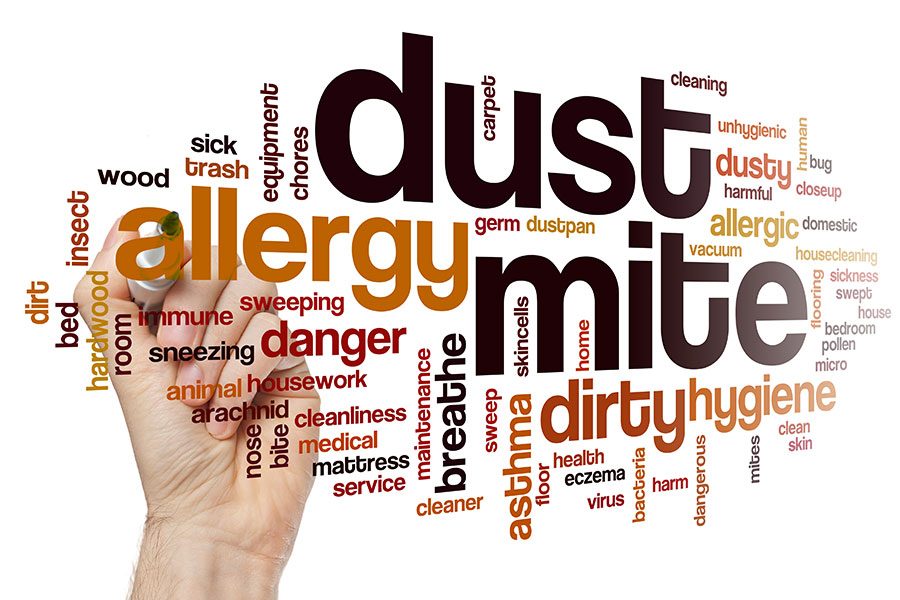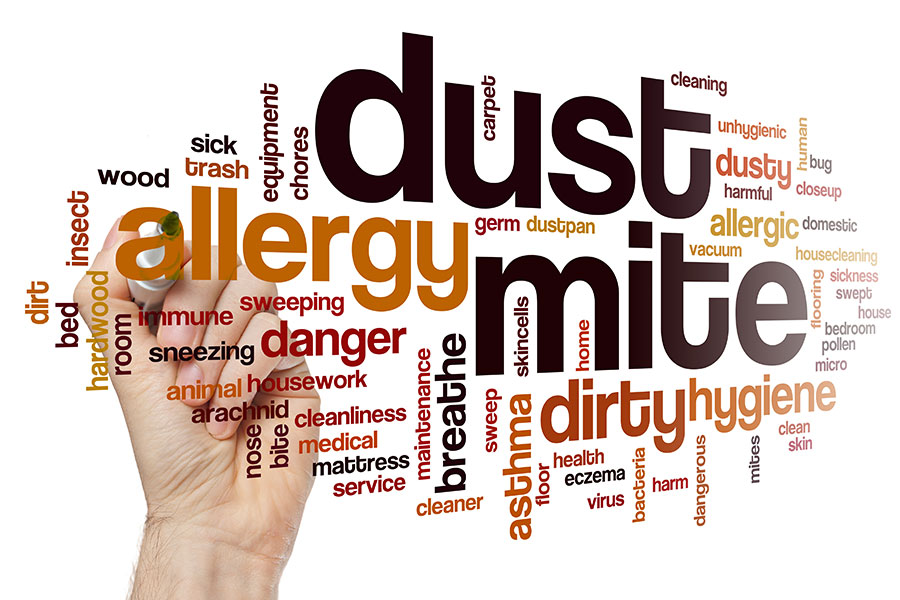Allergies and asthma are often triggered by dust mites, tiny insect-like pests that live in dust, feeding on flakes of skin shed by people and pets.(1) Dust mites can live anywhere there is dust – and particularly in these household areas: mattresses, bedding, upholstered furniture, carpets, and curtains.(2)
The allergic reaction, which can include congestion, itchy eyes, and wheezing, is caused by inhaling dust mite droppings.(1) Dust mites can also trigger an asthma attack in people who have asthma and also have the dust mite allergy.(3)
While it’s impossible to remove all dust mites from a home, there are several strategies to reduce the number of dust mites. The following tips are offered by the National Institute of Environmental Health Services:
- Use a dehumidifier or air conditioner to maintain humidity levels at, or below, 50 percent.
- Encase your mattress and pillows in dust-proof or allergen impermeable covers.
- Wash all bedding and blankets once a week in hot water, 130 to 140 degrees Fahrenheit, to kill dust mites. Non-washable bedding can be frozen overnight.
Replace wool or feathered bedding products with synthetic materials, and traditional stuffed animals with washable ones. - In bedrooms, replace wall-to-wall carpeting with bare floors, and remove fabric curtains and upholstered furniture, whenever possible.
- Use a damp mop or rag to remove dust. Never use a dry cloth, as it stirs up allergens.
- Use a double-layered microfilter bag or a HEPA filter in your vacuum cleaner.
Wear a mask while vacuuming, and stay out of the vacuumed area for 20 minutes after vacuuming, to allow dust and allergens to settle.(4)
Allergenic immunotherapy is an option for people with dust mite allergy. Traditionally, this meant subcutaneous immunotherapy (SCIT or “allergy shots”). In 2017, the FDA approved an allergen extract to be administered under the tongue (sublingual immunotherapy or SLIT) to treat dust mite allergy.(5)
For allergy professionals, Xtract Solutions offers cloud-based Allergy Immunotherapy software, designed to organize the allergy practice, from initial testing through to successful completion of immunotherapy.
(1) Allergy and Asthma Network, Ask the Allergist, Dust Mite Immunotherapy Options, https://allergyasthmanetwork.org/
(2) Miller, K., Health, How to Get Rid of Dust Mites, According to Allergists, https://www.health.com/condition/allergy/
(3) Centers for Disease Control, Common Asthma Triggers, https://www.cdc.gov/asthma/triggers.html
(4) Food and Drug Administration, FDA Approves Odactra for House Dust Mite Allergies, https://www.fda.gov/news-events/
(5) National Institute of Environmental Health Services, Dust Mites and Cockroaches, https://www.niehs.nih.gov/health/topics/agents/




